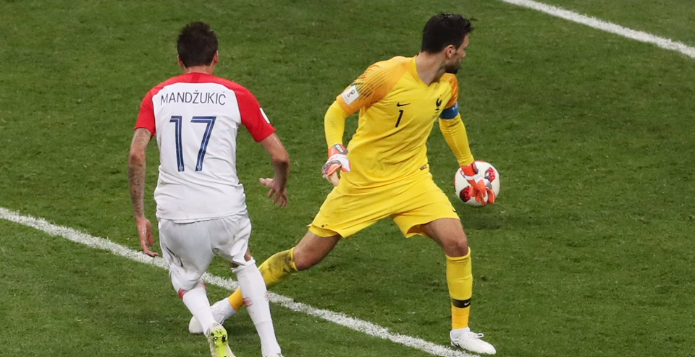NBCUniversal Telemundo Enterprises today released a timely report titled The Future Is Fútbol to define and characterize the fundamental shift in the importance of soccer in mainstream American sports and the role Latinos are playing in this economic, cultural and media phenomenon. The Future Is Fútbol report draws on primary and secondary research and data collection, including quantitative surveys and an innovative neuroscience study among bilingual Hispanics. To view the full report please click here.
Fútbol has an estimated 5 billion fans around the world and 85 million adult followers in the U.S. Gallup estimates that soccer has seen a significant increase in popularity, with a gain of 52% more fans from 2012 to 2019, compared to 27% growth in basketball and 8% growth in baseball during this period. Fueled by its growing popularity among young people and women in particular, as well as Latinos overall, the sport is benefiting from the tailwinds of growth driven by the FIFA World Cup 2022TM – kicking off in November in Qatar – and the tournament’s arrival in the U.S. in 2026.
“Fútbol is the sport of America’s future. Soccer is growing in the U.S. and Hispanics are clearly leading the way,” said Monica Gil, Chief Administrative and Marketing Officer, NBCUniversal Telemundo Enterprises. “Every four years, the FIFA World Cup TM brings Latinos and non-Latinos together with a spirit and intensity that no other sporting event in the world can match. There is no more authentic way to experience the World Cup than in Spanish. For companies and brands seeking real cultural connection and a space to engage Latinos, soccer and the FIFA World Cup TM are the place to be, this fall and for years to come.”
According to the report, the World Cup is considered more important among Hispanic World Cup viewers than any other sporting event, including the Super Bowl, the World Series, the Olympic Games, or the NBA Finals. FIFA reported that the 2018 FIFA World CupTM reached over half the global population with 3.57 billion viewers. In 2018, the World Cup had its greatest 32-day performance in Spanish-language media history, with a commanding total U.S. audience reach of 37 million.
The Future Is Fútbolfurther highlights the power of soccer as a multibillion-dollar business with profits of $40 billion in 2019, twice the worldwide revenue for American football. Fans follow players and teams year-round as celebrities and representatives of national origin and sources of local pride. U.S. soccer fans spend 7% more than the average American sports fan on team sports clothing, tickets, sports equipment, and memorabilia. In 2021, soccer matches were available almost every day, with only six days without a match on broadcast TV, a phenomenon that offers brands, retailers and advertisers alike an advantage like no other sports property.
Other key themes highlighted in The Future Is Fútbol include:
- Latinos Fueling Growth – Latinos have driven shifts in the U.S. population over the last decade. As their influence grows, so does soccer’s popularity. Hispanics and other diverse fans bring with them a love for soccer that has been part of their story for generations, shaped by history and now representing the next breakthrough in mainstream American sports.
- Among U.S. Latinos ages 16 and older, almost three-quarters (73%) say they are soccer fans, and three times more Hispanics call themselves Superfans (22%) compared to non-Hispanics (7%).
- More than half (53%) of Latinos ages 16 and older and nearly 1 out of 3 non-Latinos (29%) say they plan to watch the FIFA World Cup 2022.
- Latinos rank both soccer (57%) and American football (59%) well above basketball (45%) and baseball (40%).
- “Fútbol is Everything” Culture
- 61% of Hispanic World Cup viewers are fútbol Enthusiasts, regular fans or superfans, who say that if their team won the World Cup, their euphoria would be unmatched, an experience more exciting than getting their dream job or getting married.
- Over half (57%) of Hispanic Enthusiasts say they have reshuffled their priorities to watch an important game, including skipping family or friend events, taken off work, spent money they did not have or traveled miles to watch an important match.
- The FIFA World Cup TM is as big as a holiday. Soccer gatherings are momentous among Latino Enthusiasts who rank the event second only to Christmas, more significant than Thanksgiving and New Year’s.
- Biggest Multi-Platform Sporting Event –The ability of fans to watch and engage on any screen has a monumental impact on the growing FIFA World Cup TM fandom. Soccer media coverage and content have increased exponentially to meet the demand for more high-quality live, virtual and social fan experiences 24/7.
- The FIFA World Cup 2022TM is expected to be the world’s biggest multi-platform sports event ever. The incremental viewership from live streaming helped make the 2018 FIFA World CupTM the biggest multi-platform sports event in Spanish-language history.
- 67% of Hispanic viewers plan to watch the World Cup on broadcast TV, and 42% plan to stream the matches.
- Television is the preferred device for Hispanics to watch the World Cup (90%), followed by smartphone (34%) and computer (17%).
- The Power of Spanish – For most Hispanic fans, Spanish is the language and culture of fútbol. Viewers describe Spanish-language soccer commentators as excellent storytellers, utterly poetic and animated about what is happening on the field.
- Over half (56%) of U.S. Hispanic World Cup viewers prefer watching the FIFA World CupTM in Spanish.
- Even 1 out of 5 English-dominant Hispanic World Cup viewers prefer to watch in Spanish.
- Spanish is not exclusive to Hispanics because 17% of non-Latino tournament viewers said they would watch some of the matches in Spanish as well, an increase of 12% over 2018.
- According to a brain neuroscience study conducted among U.S. bilingual Hispanics, watching a World Cup match with Spanish commentary generated 15% greater likeability, keeping fans glued to their screens longer than watching the identical match in English.
- Key game moments, like the iconic goal call by the Spanish commentator, prompted an average of 37% greater emotional intensity compared to English, making the “highs” higher and the “lows” lower.
- The effects of Spanish game commentary also transferred to advertising. In the study, the identical ad, when played in Spanish had 19% higher likeability and 49% greater emotional intensity vs. English.
- Latinas Are Watching and Bringing Their Kids – Hispanic women are an untapped opportunity among soccer viewers.
- Four in ten (41%) U.S. Latinas say they are likely to watch the FIFA World Cup 2022TM.
- 76% of Hispanic mom tournament viewers encourage their kids to follow the World Cup and professional fútbol.
- Hispanic females are passionate fans and together comprised 17 million Spanish-network FIFA World CupTM viewers in 2018, making the tournament the most-watched Latina sporting event in Spanish-language history.
- Among the World Cup audience, a fifth (21%) of Latinas call themselves Superfans, which is far greater than both non-Hispanic males (10%) and non-Hispanic females (8%).
- And Latino viewing is a family affair, with 70% of Latino parent event viewers saying it’s important to watch the FIFA World CupTM in Spanish with their kids.
- First-Choice Sport of Young People in the U.S. – Soccer has become the fastest-growing major team sport among all high school students and is the most popular among Hispanic high schoolers.
- High school soccer participation increased 32% from 2002 to 2019, far more than the average growth of basketball (-6%), American football (-2%), baseball (6%), or ice hockey (7%).
- Soccer is egalitarian, considering that high school girls play almost as much as boys, with participation growing 31% for girls versus 33% for boys from 2002 to 2019. There were 394,105 high school girls who played soccer in 2019, a figure not far behind the 459,077 high school boys who played.
- Soccer is currently the most popular team sport among 40% of Hispanic high school students who say they played or were planning to play the sport in 2020, compared to 21% of all high school students.
Global and inclusive, growing across women and youth, fútbol is poised to redefine the American sports landscape. After years of wins, both large and small, fútbol is coming of age at the moment when millions of Latinos and fútbol fans of all backgrounds stand ready to watch, engage and lead the way.
Telemundo Deportes is the exclusive Spanish-language home of the FIFA World Cup Qatar 2022™ taking place in Qatar this Fall, starting Nov. 20. The network is prepared to deliver the most ambitious coverage in Spanish-language history with all 64 matches live, including all four games on Thanksgiving Day. Peacock will stream all the Spanish-language World Cup matches live, and will feature pre-game and post-game coverage, as well as special programming with extended interviews and highlights.
Methodology: The Future Is Fútbol Report draws on primary and secondary research and data collection. For the primary data initiative, researchers relied on quantitative surveys, qualitative interviews with Enthusiasts and Superfans, and a neuroscience study with bilingual Hispanics. This research is about people who plan to watch the FIFA World Cup 2022™, referred to in the report as World Cup viewers. The quantitative phase consisted of a national survey fielded among World Cup viewers ages 16 and older using a hybrid online and intercept in-person sampling framework to ensure representation of the hard-to-reach population. The sample consisted of 1,351 completed interviews among 967 Latinos and 384 non-Latinos, representative of soccer followers in the U.S. Estimates of soccer fandom and World Cup viewing were derived from a national pre-survey screener. Fieldwork was conducted in February 2022. In the neuroscience study conducted by the firm Neuro-Insight, fluent Latino bilinguals were the target because they could watch the game in Spanish or English. This study measured the activity in different brain regions responsible for guiding viewing behavior. Metrics included the desire to watch certain content longer and the feeling of strong emotions during the experience. Bilingual Hispanics with similar demographics were divided into two groups to watch the same 2018 FIFA World Cup™ final (France vs. Croatia) match, with the only difference being the language of the broadcast.
 Sports Media Report
Sports Media Report

